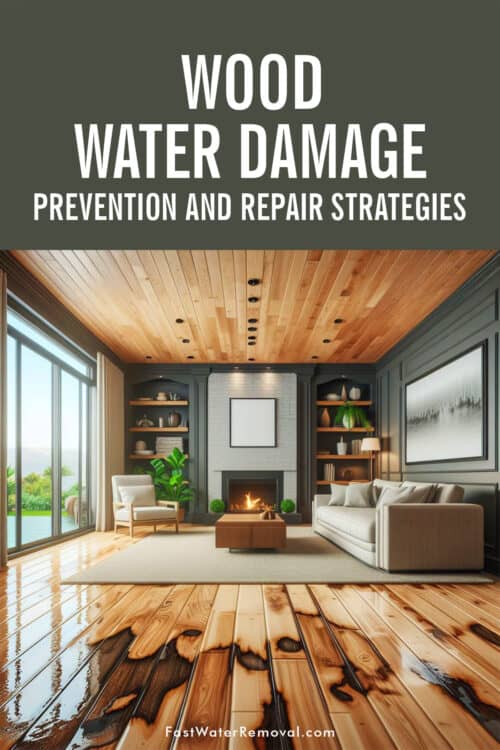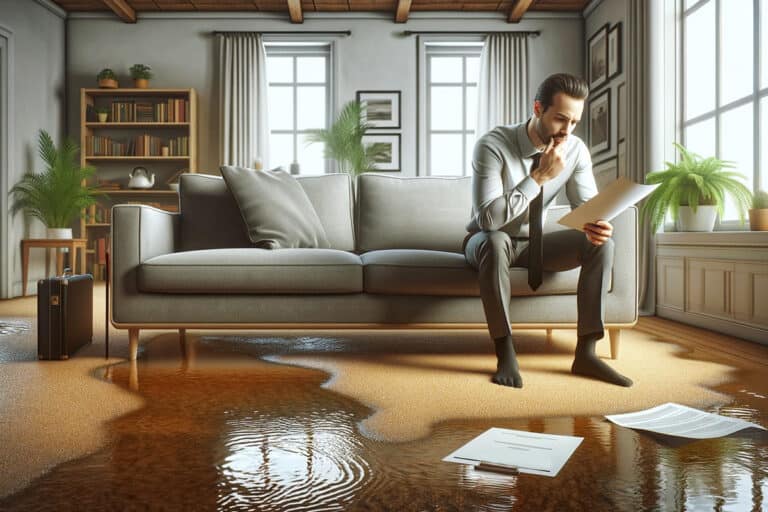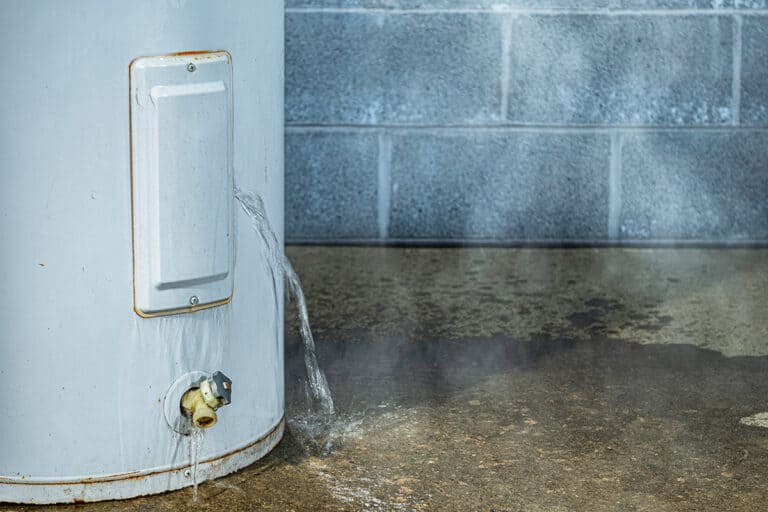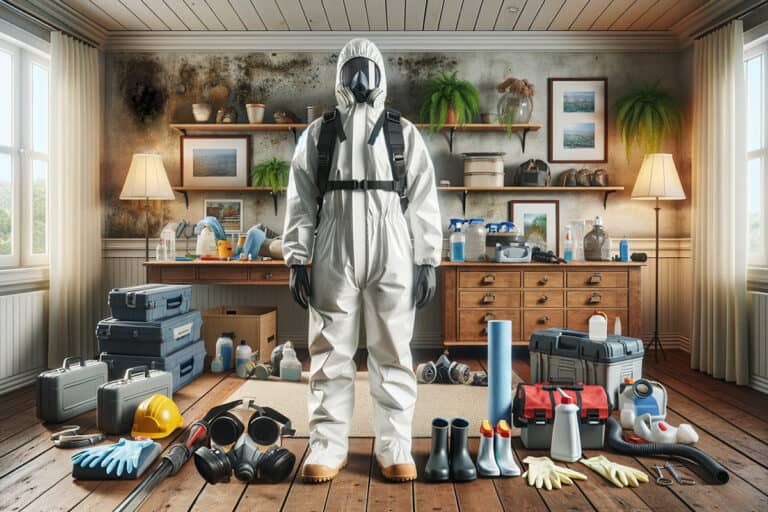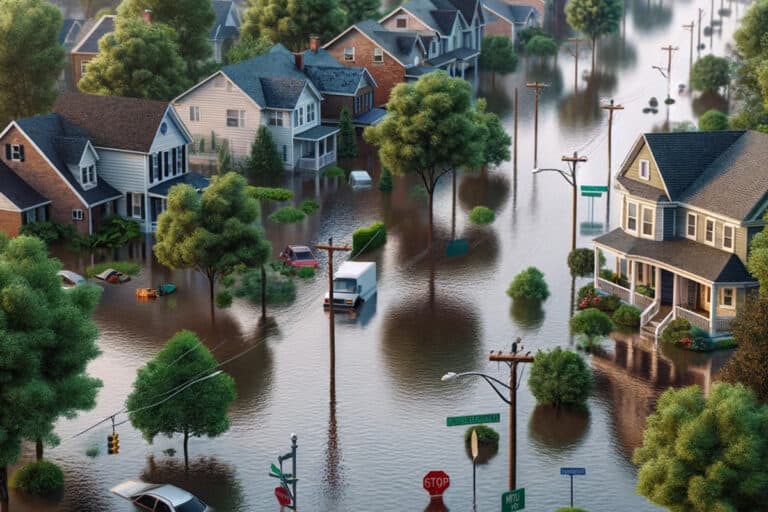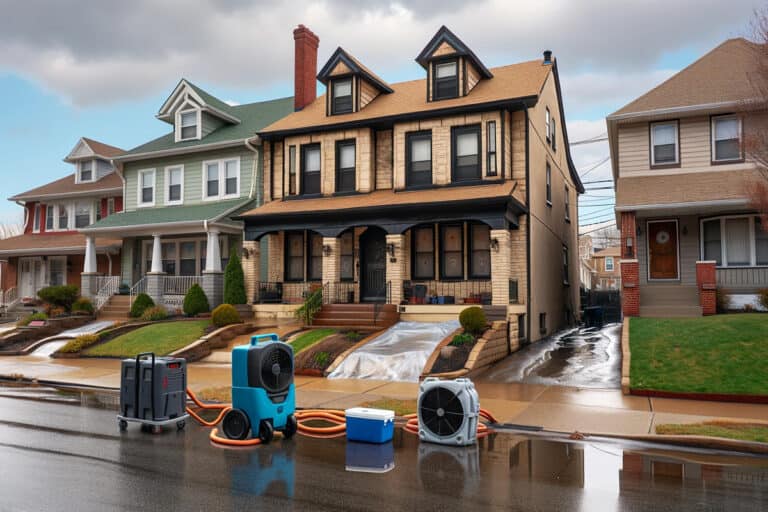Disclosure: I am compensated for purchases made through some links on this site. Click for details.
Water damage to wood is an issue that can impact the structural integrity and aesthetic appeal of wooden structures and furnishings. Whether it’s a result of flooding, leaks, or high humidity, moisture can penetrate wood, causing a range of problems from warping and discoloration to mold growth and rot. Identifying the extent of water damage and the type of wood affected is crucial for determining the appropriate response.
Addressing water damage promptly can reduce the risk of further deterioration and costly repairs. It involves drying out the affected areas, assessing for structural damage, and taking steps to restore the wood’s condition. Long-term care for water-damaged wood includes regular inspections and maintenance to prevent recurrence.
Key Takeaways
- Water damage to wood requires immediate attention to prevent structural and visual deterioration.
- Effective restoration depends on the type of wood and the extent of moisture exposure.
- Ongoing care and preventative measures are essential for the longevity of water-damaged wood.
Understanding Water Damage
Water damage to wood surfaces can result from various sources, including environmental exposure and accidental spills. The integrity of wood surfaces, such as hardwood floors, can be significantly compromised by moisture, leading to a range of physical and aesthetic issues.
Types of Water Damage
Water damage is often classified by its origin, including floods, leaks, and condensation. Each type of water damage has distinct implications for wood surfaces. Floods can lead to immediate saturation of wood, causing severe warping and potential structural damage. In contrast, leaks might cause localized damage, appearing as water stains or mold over time. Condensation invites a gradual buildup of moisture, resulting in swelling or rot that progresses slowly but can have lasting effects on wood flooring.
Effects on Different Wood Surfaces
The impact of water damage varies widely across different types of wood surfaces. Hardwood floors are particularly susceptible to moisture damage, which can manifest as cupping, where the edges of the boards rise higher than the center, or crowning, where the center rises higher than the edges. On the other hand, some wood surfaces may develop buckling, where the wood detaches from the subfloor, lifting up from its intended position.
Recognizing Signs of Damage
Identifying the signs of water damage early can prevent more severe deterioration of wood flooring. Some recognizable symptoms include discoloration, such as dark or white water stains, which are clear indicators of damage. Additionally, wood floors may exhibit warping or a spongy feel underfoot, signaling excess moisture. If a musty odor is present, it could indicate mold growth, which poses a risk not just to the wood surface but also to indoor air quality.
Preventative Measures
Taking proactive steps to prevent water damage is crucial for the longevity of wooden items. These measures target maintaining steady humidity levels, providing regular care, and applying protective finishes.
Maintaining Proper Humidity Levels
To minimize the risk of water damage, one should keep indoor humidity levels consistently between 30% and 50%. The use of dehumidifiers or humidifiers can assist in maintaining these levels, preventing excessive swelling or shrinkage due to moisture changes.
Routine Care and Maintenance
Frequent inspections can catch early signs of moisture damage, such as gaps or soft spots. Homeowners ought to clean wood surfaces regularly with appropriate products to avoid the buildup of dirt and moisture, which can contribute to decay.
Protective Finishes and Treatments
Applying a high-quality sealant can significantly reduce the wood’s vulnerability to water penetration. Options like oil-based sealers or polyurethane provide a barrier against moisture, ensuring the wood remains dry and intact longer. Regular reapplication according to the product’s instructions achieves the best results.
Addressing Water Damage
When wood is compromised by water, the critical actions are to assess, dry, and then determine whether to repair or replace. Each step is crucial for safeguarding structural integrity and aesthetic value.
Initial Steps for Damage Control
The first response to water damage should be a thorough assessment of the damage. Homeowners must identify whether the damage is superficial or structural. Immediate measures should include removing standing water and any wet objects in contact with the wood.
Drying and Dehumidifying Techniques
After water removal, the focus shifts to efficient drying techniques. Industrial fans and dehumidifiers are deployed to circulate air and reduce humidity. Close monitoring is necessary to ensure that the drying process is progressing effectively.
Repair or Replace? Decision Making
The decision to repair or replace depends on the extent of damage and the potential for future issues like dry rot. Minor damage such as light warping might only require sanding and refinishing. However, for severe structural damage, replacement might be the more prudent, long-term solution.
Restoration and Repair
When dealing with water damage in wood, it’s essential to assess the extent of the damage and determine the most effective repair methods. Approaches to restoration vary depending on the type of wood, the depth of the damage, and whether the issue is cosmetic or structural.
Fixing Hardwood Floors
Hardwood floors affected by water can often be saved if one acts promptly to mitigate damage. The first step involves removing standing water and drying the area thoroughly. If the hardwood has started to cup or warp, one might need to carefully remove the damaged planks to reduce tension and prevent further warping. After drying, replacement of the hardwoods or affected sections can be done, ensuring that the new planks match the moisture content of the existing flooring.
Refinishing and Sanding Methods
Refinishing water-damaged wood floors involves sanding down the surface to remove the damaged layers, which can reveal a fresh layer beneath. Sanding must be done uniformly across the entire floor to avoid uneven surfaces. Once sanded, the wood should be cleaned and then refinished with a sealer that matches the floor’s original finish, restoring the floor’s appearance and providing protection from future moisture.
Dealing with Structural Damage
Structural damage, such as that affecting girders, joists, or the subfloor, requires immediate attention to maintain the integrity of the home. If the damage to these components is significant, one should seek professional assessment to prevent potential collapse. Repairs to these elements may involve the reinforcement or replacement of the damaged wood. Incorporating new materials should be done with care to ensure they integrate with the existing structure, maintaining stability and support.
Managing Mold and Wood Pests
Effective management of mold and wood pests, such as termites and carpenter ants, is crucial in maintaining the integrity of wood structures. Focused on establishing a proactive approach, this section elucidates proven mold remediation techniques and strategies to combat wood-damaging insects that threaten the stability of wood within environments like crawlspaces.
Mold Remediation Techniques
Initial Inspection and Cleaning
- Identify the source: Locate and fix the water issue that initiated mold growth to prevent further damage.
- HEPA Vacuum: For loose spores, use a HEPA vacuum on the affected wood, then dispose of the contents in a sealed plastic bag outside.
Killing Mold
- Appropriate cleaners: Apply a fungicide or a solution of water and vinegar to kill the remaining mold on wood surfaces.
- Drying out: Ensure the treated area is thoroughly dried out, as moisture supports mold growth.
Combating Wood-Damaging Insects
Identifying Pests
- Termites: Look for signs of termite damage such as hollowed wood or visible tunnels.
- Carpenter ants: Detect carpenter ant damage by observing wood shavings or the presence of ants in wood structures.
- Powderpost beetles: Search for fine powder-like sawdust and tiny exit holes as clues to an infestation.
Treatment and Prevention
- Insecticides: Employ insecticides designed to target the specific pests afflicting the wood.
- Moisture control: Maintain dry conditions in areas like crawlspaces to make the environment less habitable for pests.
Long-Term Wood Care
To ensure wooden furniture endures for years, proper care focused on cleanliness and environmental protection is crucial. This section outlines effective strategies.
Regular Cleaning and Sunlight Protection
Regular cleaning is essential for maintaining the appearance and integrity of wooden furniture. One should dust wooden surfaces frequently using a soft cloth to remove dirt and prevent buildup, which can scratch and dull the finish. To protect from sunlight, furniture can be placed away from direct exposure or treated with UV-protective sealants, as prolonged sunlight can fade and weaken wood.
Professional Assessments and Treatments
Periodic professional assessments help detect any potential issues such as hidden moisture damage before they escalate. Professionals can also apply specialized treatments to safeguard the wood against environmental threats. They might utilize dehumidifiers to manage moisture levels in a room, or apply sealants and finishes that enhance resistance to water and other damages.
Conclusion
In conclusion, dealing with water damage in wood requires a multifaceted approach encompassing both prevention and repair. Understanding the sources and types of water damage is crucial, as is recognizing early signs of deterioration.
By maintaining proper humidity levels, conducting routine care, and applying protective finishes, the longevity of wooden structures and furnishings can be significantly extended. In cases where damage occurs, timely and appropriate responses—ranging from drying and dehumidifying to more extensive repair or replacement strategies—are essential.
Moreover, addressing challenges like mold growth and wood pests is vital for maintaining the structural integrity and aesthetic value of wood. Ultimately, a combination of proactive measures, regular maintenance, and informed responses to damage can help preserve the beauty and functionality of wood in our homes and environments, safeguarding this valuable material against the ravages of water exposure.
